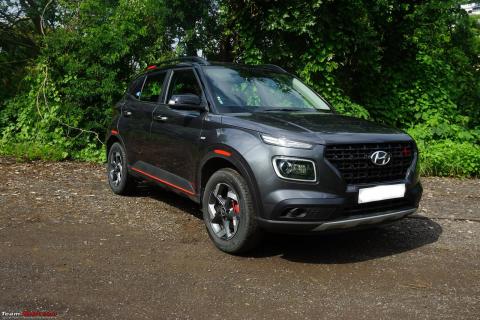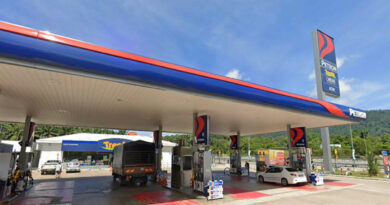Is it normal for my T-GDi Venue to idle at higher rpms at altitudes?
Isn’t a modern car equipped with sensors to alter the air-fuel ratio to maintain the proper idle at any altitude?
BHPian koushm recently shared this with other enthusiasts.
I have a 2020 Hyundai Venue T-GDI which runs fine at sea level and idles at around 850 rpm after the engine is properly warmed up. Recently, I visited the hills of Darjeeling and at an altitude of 2000 m, my car started idling at around 1,200-1,300 rpm. The idling rpm is stable. I am very new to the hills and have searched on Google but haven’t found any information regarding the same. The service centre people are also clueless about this. According to them, as there is less oxygen at the higher altitudes, the car idles at higher rpm. But, isn’t a modern car equipped with sensors to alter the air-fuel ratio to maintain the proper idle at any altitude? Kindly help me experienced BHPians.
Thanks in advance.
Update: Sorry to ask another novice question, please don’t get disturbed. If the air mass entering the combustion chamber is less, then can’t it be accommodated by allowing more air to enter the combustion chamber using ICV and not injecting more fuel?
Here’s what BHPian kosjam had to say on the matter:
The ECU mostly tries to ensure that the air-fuel ratio remains as close to the set ratio. As the air in the mountains is thinner, less power is generated per power stroke owing to lesser air mass entering the combustion chamber. This would cause the rpm to be unstable, hence more fuel is injected till a stable rpm is achieved. For your car type, it could be around 1200-1300 rpm as you stated.
Update: Don’t worry, answering a question is also a learning exercise quite often because some research is required sometimes.
For example, in this case, I am unfamiliar with the term ICV. Anyway, after some research, I now understand this.
Coming back on topic, @flyboysid has explained quite accurately, that the cubic capacity is fixed on an engine, so even opening the ICV will not increase the volume of air taken into the cylinder. As the air itself is less dense, the fuel injected cannot be more per cycle, as a result, less power is produced in the cycle, and if the engine is not able to produce enough power, the ECU will detect the instability and increase fuel to compensate, which will reflect on the panel as increased RPM.
Whether your vehicle has a turbo or not, will not make a difference, as during idle, the turbo is bypassed in most vehicles.
This is perfectly normal and not a cause for concern.
Here’s what BHPian FLYBOYSID had to say on the matter:
Air enters the chamber as per volume, and the Cubic Capacity of your engine is fixed. The mass is governed by the density of the air. The Turbo Charger does the job of increasing the mass flow into the chamber. The amount of mass flow the turbo can increase is also a function of the initial density of air at the altitude. Therefore, the increase in RPM. For a Naturally Aspirated engine, it’s increase in RPM only.
I had noticed the same during my trip to Leh in my SX4 in 2010. However, I was astonished to see the increase in Fuel Efficiency. On a tank-to-tank basis, it returned close to 15 km/l. The only time I saw the figures above 11 km/l was at high altitudes.
Idling RPMs of even the Jet Engines vary when they land there with the settings for plains. If I remember correctly they used to bump up the fuel flow to make the engine sustain. Yes, there were jets whose engines were not computer-controlled!
Here’s what BHPian aviator1101 had to say on the matter:
Any engine whether turbocharged or NA will operate at a higher rpm at higher altitudes, both during idling and with load applied.
At idle it is to sustain the engine’s operation itself. And with load to produce the same power, higher rpm would be required for reasons stated by kosjam and FLYBOYSID in their posts.
I have a different concern. The change in RPMs at higher altitudes like Ladakh, North Sikkim, etc is common. These are places where it is recommended even for human beings to acclimatize before exerting themselves. But at Darjeeling which is barely at 2000m AMSL and the air density is also not that rare, it should not increase by almost 50%, in your case from 850 to almost 1300.
Is there any other problem? Or is it just the higher idling rpm that is bothering you?
Do share the inputs. Such issues are always a learning.
Check out BHPian comments for more insights and information.
Source: Read Full Article



